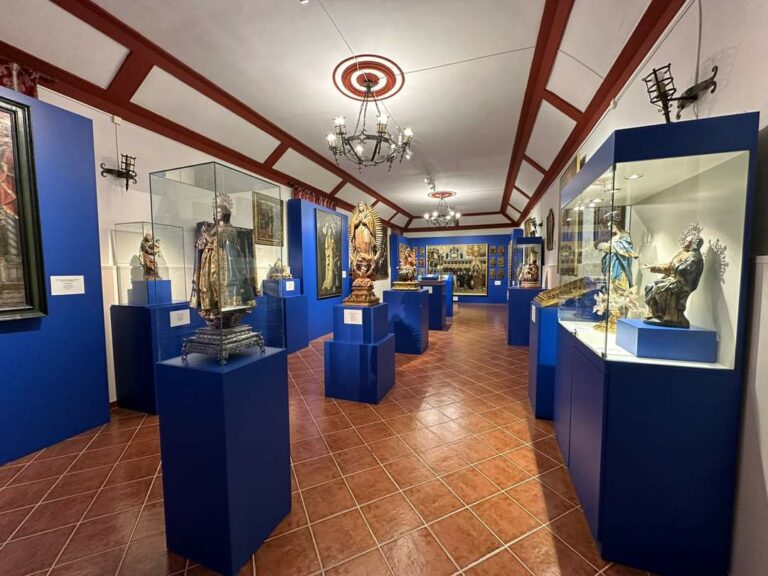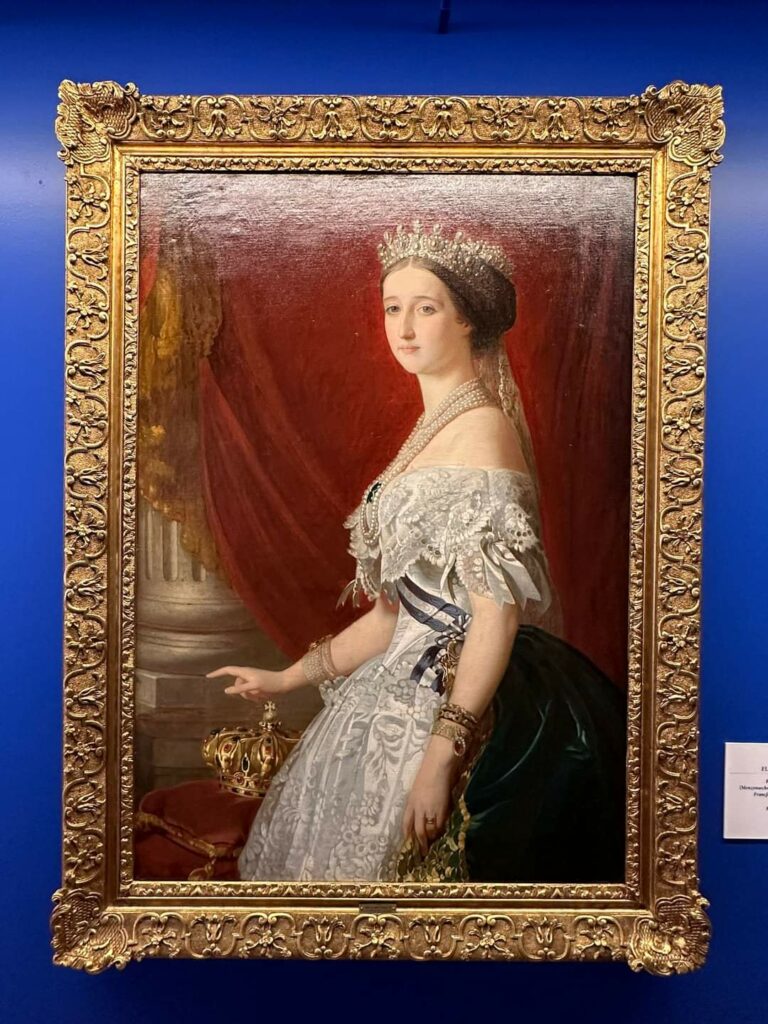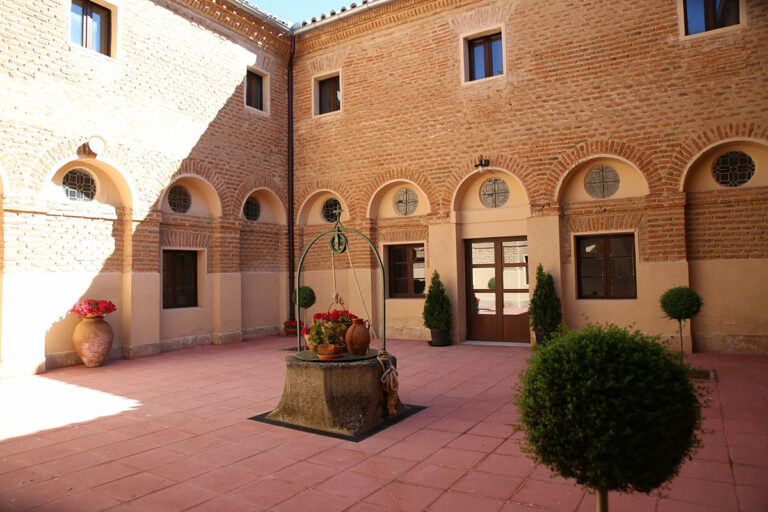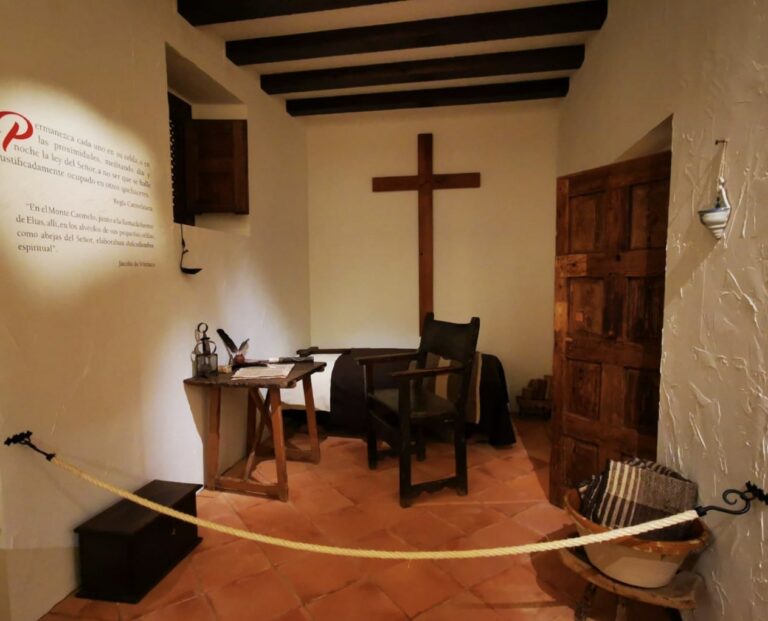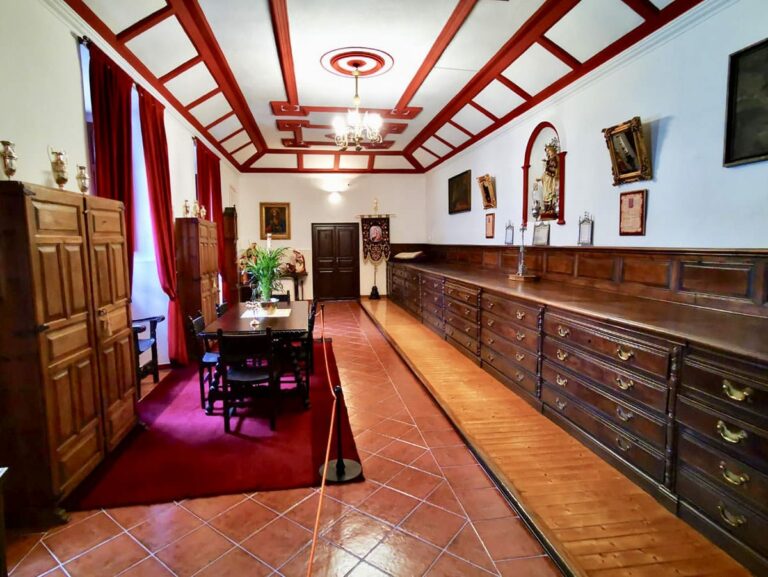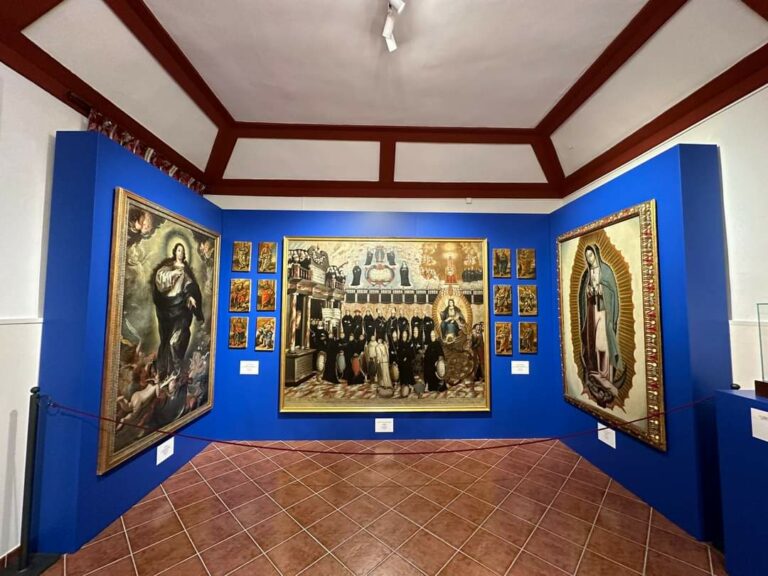Teresiano Museum
TERESIANO-SANJUANISTA CENTER "De Claris Mulieribus" Saints, Martyrs, Wise Women....
Historical Background
Saint Teresa of Jesus founded the Carmel of Alba de Tormes on January 25, 1571, with Saint John of the Cross present at the foundation. Here we find the saint’s tomb since her death in 1582. The Order of Discalced Carmel wished to found a male convent in Alba de Tormes to foster the devotion of St. Therese.
The foundation was made in 1692, becoming the first church and convent in the world dedicated to Saint John of the Cross.
Vitor Teresa
Throughout these centuries of history, many events have taken place in this house. We highlight as an important milestone in its history the Teresian Jubilee Year celebrated in Alba de Tormes. On this occasion, in collaboration with the Provincial Council of Salamanca, the major Vitor Teresa exhibition was held between July 2018 and January 2019, transcending the Teresian Jubilee Year itself and achieving great success, being considered the most important cultural event of this anniversary.
Sanjuanista Teresian Center
Following this event in the town of Alba de Tormes, the ground floor spaces of the convent of San Juan de la Cruz were reorganized under the name of the Sanjuanista Teresian Center, creating several permanent exhibition halls that house highly interesting artistic pieces.
The building itself is included in the scope of a cultural heritage site and has been declared a monument. This is reason enough to make an interesting visit to the church, which is part of the so-called Carmelite Baroque art, characteristic of the Discalced Carmelite Order in the 17th century. It is an example of this artistic style, very well preserved after the recent restoration work.
Church of San Juan de la Cruz
The Church of San Juan de la Cruz is worth visiting. The side chapel houses the Carmelite relics kept in the convent of San Juan de la Cruz, among them the most distinguished is the index finger of Saint John of the Cross. Most of the relics are of Saint Teresa of Jesus and Saint John of the Cross, placed in 17th-century reliquaries.
Main Sacristy
From the church, you can access the main sacristy, a room that offers, in its warmth, various works of art worthy of the visitor’s contemplation. The walnut chest of drawers, made by carpenter monks, demonstrates, in its simple and austere design, the elegance that can be observed throughout the entire architectural complex we are discussing.
Convent Cloister
The convent cloister is particularly striking, with its central well in its courtyard and its 17th-century cistern. In the corners of the cloister, paintings representing scenes from the lives of Saint John of the Cross and Saint Teresa of Jesus are preserved.
Furthermore, various works of art from the 16th to the 20th centuries can be seen in this space.
Refectory
Of particular interest is the old refectory, which preserves 16th-century tables and was decorated during the time of the convent’s founding.
Portal
In the portal area, you can see the beautiful image of Saint Teresa of Jesus from the Carmel of Ledesma. In the vestibule, you can see four high-quality reliefs depicting scenes from the life of Saint Teresa of Jesus, as well as the beautiful model of the Teresian Basilica by the sculptor Jerónimo Cotobal Castro.
Convent Garden
The convent garden is a very pleasant space in its layout and is dedicated to Saint Henry of Ossó due to the close relationship between this great promoter of Saint Teresa of Jesus and Alba de Tormes.
Ovalle Houses
From the garden area, we access two other exhibition halls located in the space once occupied by the houses of the Ovalle family, relatives of Saint Teresa of Jesus who lived in the ducal town. Of particular interest are two autograph letters from Saint Teresa of Jesus that show her unique handwriting.
Here, you can also see a reproduction of the cell of Saint John of the Cross, recreating its 16th-century appearance.
The urn containing the entire body of Saint John of the Cross from the 17th century is striking, and on one side houses one of the first portraits of this saint. Also striking is the sculpture entitled “Glorification of Saint Teresa,” which has been recently restored and belongs to the Neapolitan Baroque.
Beautifully crafted sculptures from the school of Gregorio Fernández, ivory pieces, valuable religious goldsmithing, valuable archival documentation, engravings, books, the first edition of the Works of Saint John of the Cross from 1618, recently brought from Madrid, representative paintings of the great mystics of the Discalced Carmelites, and objects from everyday life can all be seen in these rooms.
All the artworks included in the permanent exhibition rooms have been titled and dated, and each has its corresponding information label. Throughout the exhibition, we can also read various information panels that provide insight into the biography, works, and aspects related to these great figures, in order to gain a deeper understanding of them.
Thanks to the determination of the Discalced Carmelites of Alba de Tormes to promote the images of Saint Teresa of Jesus and Saint John of the Cross in the Ducal Villa, the Ducal Villa houses the Teresian Center of Saint John of the Cross. Its permanent exhibition halls serve as a draw for the people of Alba, pilgrims, and tourists who can come face to face with these two world-renowned figures, so closely associated with Alba de Tormes.
Church of San Juan de la Cruz
Tour Virtual
Audioguias
Teresiano Museum
Schedules
-
From 10 a.m. to 2 p.m.
From 4 p.m. to 6:30 p.m.
Rates
- 1€
- Groups of up to 10 people: €3
- Groups of + 10 pax: €2
- Guided tour of the Carmus Museum: +1 € per person
Information and contact
- Plaza de Santa Teresa, 4 37008 Alba de Tormes
- +34 923 30 00 43 / 628 33 46 73
- padremiguelangelocd@gmail.com
- http://padrescarmelitasalba.org/
- Come on Google Maps
